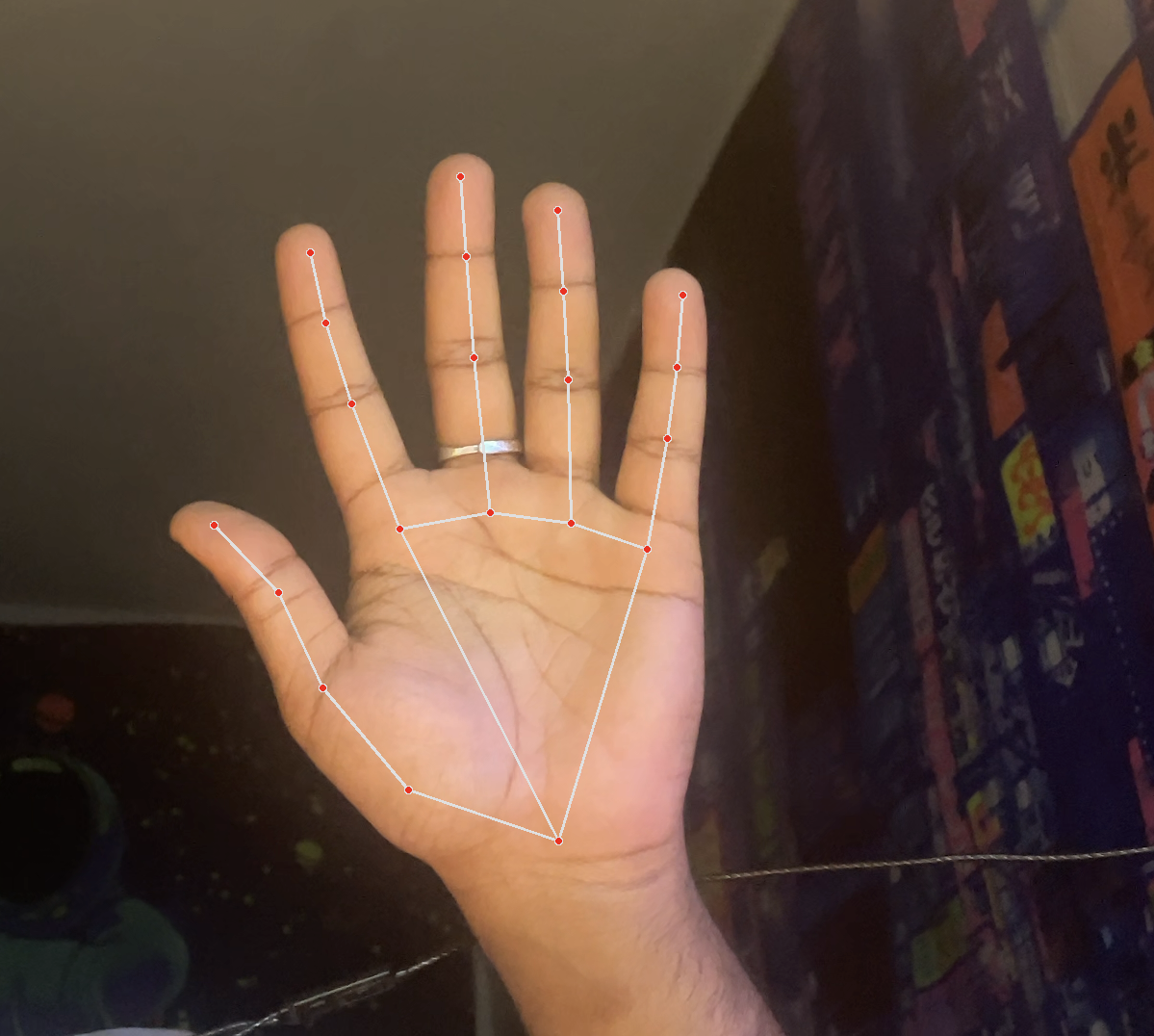- Published on
Controlling Spotify with Hand Gestures Using OpenCV and MediaPipe
- Authors
- Name
- Mohit Appari
- @moh1tt
Introduction
In this blog, we will create a computer vision project that allows you to control Spotify using hand gestures. This system uses OpenCV and MediaPipe to detect gestures in real-time and automate tasks like play/pause, track switching, and volume control. Let’s dive in!

Project Overview
This project involves:
- Using MediaPipe to detect hand landmarks.
- Implementing gesture recognition for actions like pinching and swiping.
- Automating Spotify controls with Python’s
pynput.keyboardlibrary. - Integrating everything into a real-time system.
Prerequisites
- Python 3.7+
- OpenCV
- MediaPipe
- pynput
You can install the required libraries with:
pip install opencv-python mediapipe pynput
Python implement can be found on the github link here: GitHub Repository
Key Features
- Gesture Recognition Using MediaPipe, the program identifies hand gestures and tracks landmarks in real-time. The key gestures include:
Pinch: For play/pause. Swipe: For next/previous track. Vertical Movement: For volume control. 2. Real-Time Control The application processes frames from the webcam and triggers Spotify actions instantly.
- Threshold-Based Logic Thresholds ensure robust detection and minimize false positives, providing a seamless experience.
Challenges and Improvements
False Positives: Adding more robust thresholds or AI-based gesture classification could improve accuracy. Lighting Conditions: Performance may degrade under poor lighting. Testing in various environments is recommended. Scalability: Integrate with additional media controls or devices for a broader application.
Conclusion
This project demonstrates the potential of combining computer vision with gesture recognition for real-world applications. With libraries like OpenCV and MediaPipe, it’s possible to create intuitive and hands-free solutions to everyday problems.
What other applications can you think of for this technology? Let us know !